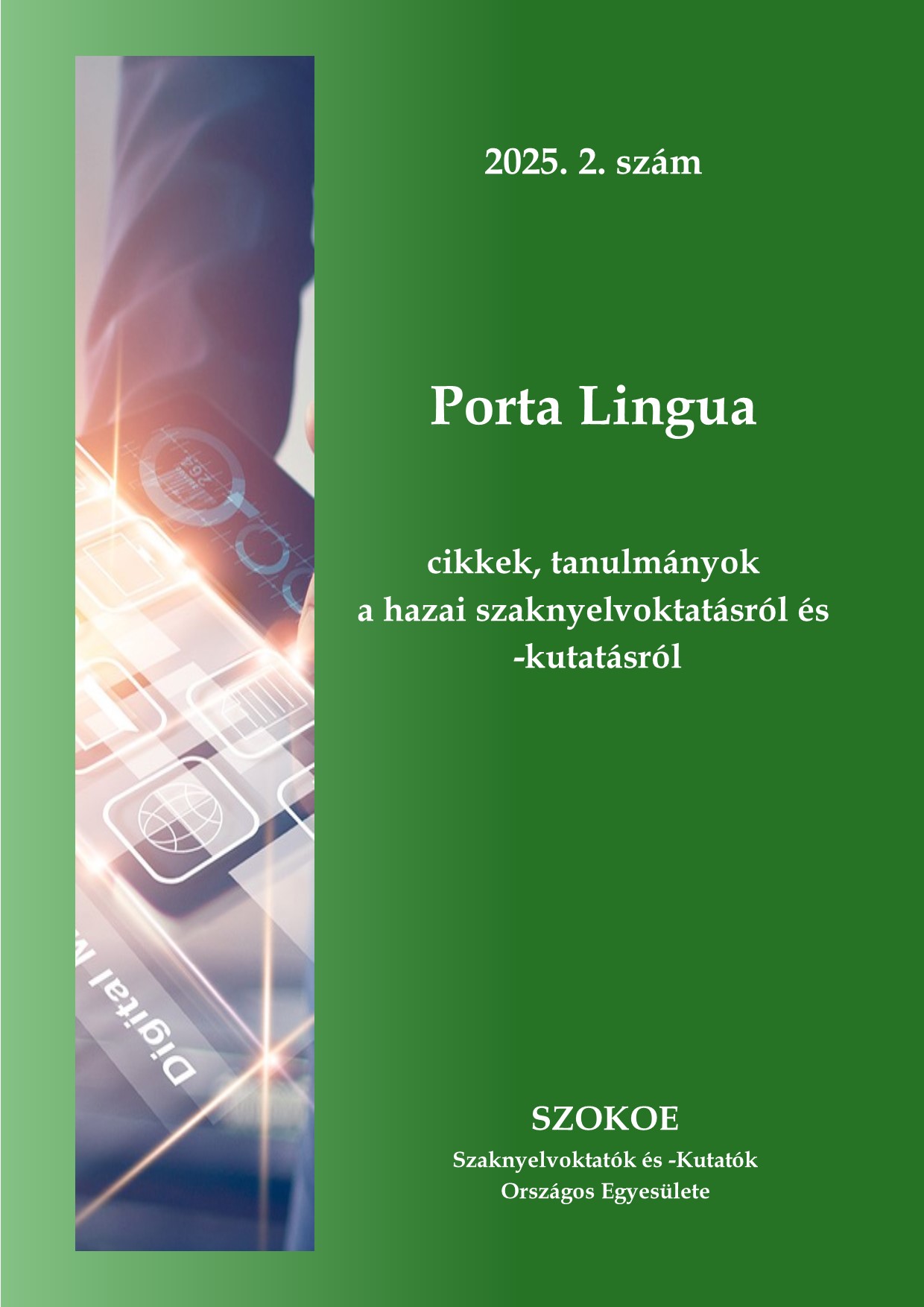On neologisms with human and machine logic
Abstract
The paper focuses on the topic of Hungarian neologisms. Since the author’s research on the topic (Sólyom 2014, 2020b), the experiences of language users on neologisms have presumably been shaped by the large number of new words and language forms entering the professional and everyday language use, as well as by the emergence of artificial intelligence. The paper presents a survey conducted among engineers (2018-19), and among university students of humanities (2024), and with artificial intelligence (2024). Engineers had to make a list, while students had to create a mind map of neologisms based on their own brainstorming: what comes to mind about the term, and whether they could list some examples. In the second phase of the research, the author gave the task of brainstorming to AI-based programs: ChatGPT and a presentation software SlidesGPT. The results answer the following questions about neologisms: 1) what “naïve” knowledge of neologisms the respondents in 2024 have and how they are represented in the mind maps; 2) what are the similarities and differences in the grammatical and semantic structure of the neologisms mentioned by the engineers and the students; 3) what information on the topic was collected by the software in 2024 and how it was organised; 4) whether there are commonalities between the human and machine summaries and, if so, what they are.
References
Balogh, A. – Földesi, T. (2008): A minőségügy magyar terminusainak értelmezése. Magyar Terminológia. 1/2. 243–260. https://doi.org/10.1556/MaTerm.1.2008.2.5
Croft, W. (2000): Explaining Language Change. An Evolutionary Approach. Longman: Harlow – New York.
Dobos, Cs. (szerk.) (2010): Szaknyelvi kommunikáció. Miskolci Egyetem – Tinta Könyvkiadó: Miskolc – Budapest
Fóris, Á. (2013): A szaknyelvek szociolingvisztikai és terminológiai megközelítése. In: Kontra, M. – Németh, M. – Sinkovics, B. (eds) (2013): Elmélet és empíria a szociolingvisztikában. (Válogatás a 17. Élőnyelvi Konferencia – Szeged, 2012. augusztus 30. – szeptember 1. – előadásaiból.). Gondolat Kiadó: Budapest.
Kurtán, Zs. (2003): Szakmai nyelvhasználat. Nemzeti Tankönyvkiadó: Budapest
Minya, K. (2003): Mai magyar nyelvújítás – szókészletünk módosulása a neologizmusok tükrében a rendszerváltozástól az ezredfordulóig. Tinta Könyvkiadó: Budapest
Sólyom, R. (2018): A kérdőíves felmérések szerepe kognitív szemantikai és stilisztikai elemzésekben. In: Domonkosi, Á. – Simon, G. (szerk): Nyelv, poétika, kogníció. Elmélet és módszer a poétikai kutatásban. Líceum Kiadó: Eger
Sólyom, R. (2019 [2014]): A mai magyar neologizmusok szemantikája. Nyelvtudományi Értekezések 165. sz. Akadémiai Kiadó: Budapest. https://doi.org/10.1556/9789634544265
Sólyom, R. (2020a): Szaknyelvi szemantika. Funkcionális kognitív elemzések. Károli Gáspár Református Egyetem – L’Harmattan Kiadó: Budapest
Sólyom, R. (2020b): Neologisms in Hungarian Terms of Quality Assurance. Taikomoji kalbotyra (Applied Linguistics). 14. 72-81. https://www.journals.vu.lt/taikomojikalbotyra/article/view/19190/18345 https://doi.org/10.15388/Taikalbot.2020.14.6
Szathmári, I. (2004): Stilisztikai lexikon: stilisztikai fogalmak magyarázata szépirodalmi példákkal szemléltetve. Tinta Könyvkiadó: Budapest
Szathmári, I. (főszerk.) (2008): Alakzatlexikon: a retorikai és stilisztikai alakzatok kézikönyve. Tinta Könyvkiadó: Budapest
Tolcsvai Nagy, G. (2012): A stílus szociokulturális tényezőinek kognitív nyelvészeti megalapozása. In: Tátrai, Sz. – Tolcsvai Nagy, G. (szerk.) (2012): A stílus szociokulturális tényezői. Kognitív stilisztikai tanulmányok. ELTE: Budapest. 19–49



